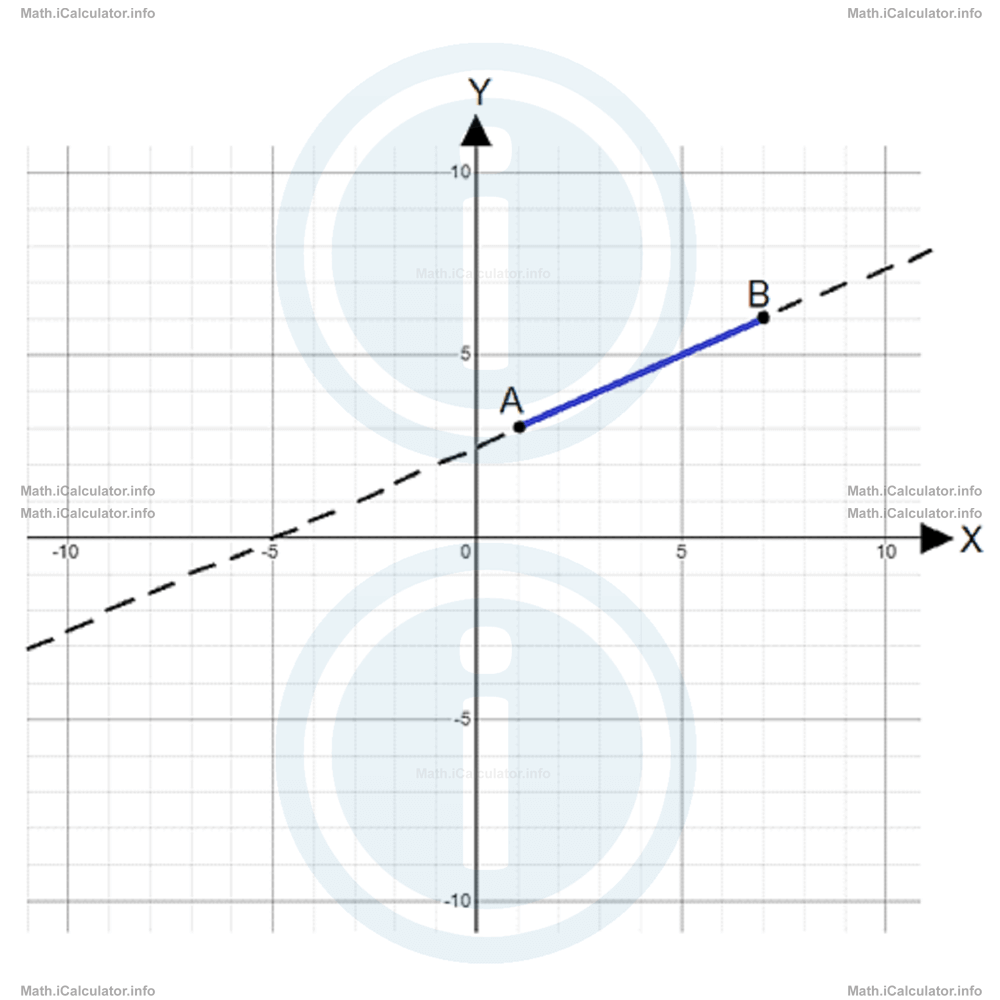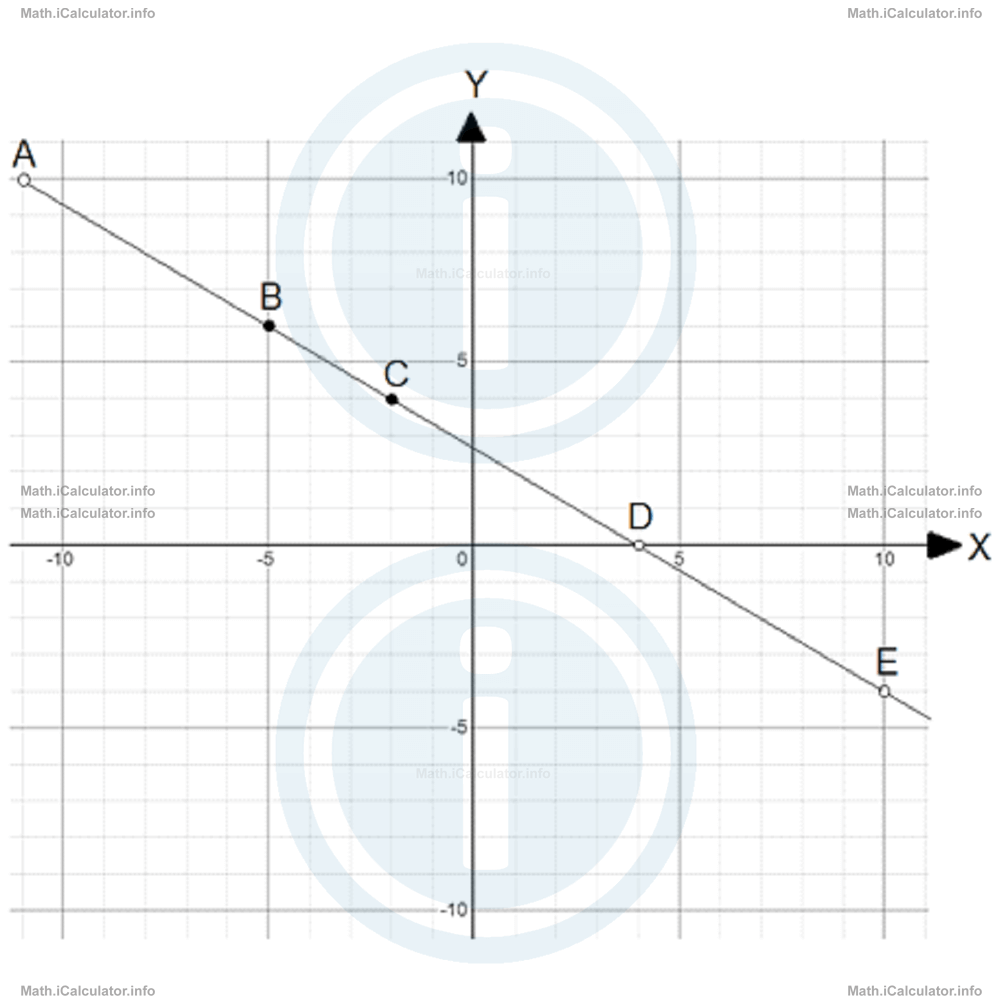Menu
Math Lesson 14.5.2 - Definition of Line Segment
Please provide a rating, it takes seconds and helps us to keep this resource free for all to use
Welcome to our Math lesson on Definition of Line Segment, this is the second lesson of our suite of math lessons covering the topic of Line Segments, you can find links to the other lessons within this tutorial and access additional Math learning resources below this lesson.
Definition of Line Segment
A line segment is the part of a line that lies between two given endpoints. The difference between line segments and number sets we discussed earlier in this tutorial is that line segments may lie in other directions besides the number axis because - as we have seen in the previous tutorials - the orientation of a line is not always only horizontal or vertical.
We usually refer to line segments when dealing with linear graphs. Line segments are useful when we want to focus our attention on a particular section of the graph. For example, the line segment [AB] in the figure below makes us focus our attention only on the part of the graph that lies horizontally from x = 1 to x = 7 and vertically from y = 3 to y = 6.

Line intervals are like line segments but don't include the two endpoints. If AB in the above figure were a line interval, it would include all values between A and B but not A and B themselves. There exist the half-intervals and half-segments as well, when dealing with parts of a line. Look at the example below.
Example 2
In the figure below:

- Find what type of relationship points A and B, B and C, C and D, and D and E have with each other.
- Write the corresponding number relationships in symbols by considering each direction separately.
- Write the equation of the line shown in the graph.
Solution 2
- Point A is indicated in the figure by an empty dot while point B is indicated by a filled dot. Therefore, we have the half-interval (AB] in the first part of the line.
Again, given that point C is indicated by a filled dot, then BC is a segment. In symbols, we write it as [BC].
On the other hand, point D is indicated by an empty dot, so CD is a half-segment. In symbols, we express it is [CD).
Last, point E is indicated by an empty dot as well. Therefore, DE is an interval. We express it is symbols as (DE) - Point A is at (-11, 10) and point B at (-5, 6). Hence, using the segments and intervals symbols we obtain for the given half-interval in each direction: ABx = (-11, -5] and ABy = (10, 6]. We have expressed ABy as (10, 6] instead of [6, 10) to point out its downward direction. The same thing is true for other parts of the line as well.
Point C is at (-2, 4). Therefore, we write for the segment BC in each direction: BCx = [-5, -2] and BCy = [6, 4].
Point D is at (4, 0). Therefore, we write for the half-segment CD in each direction: CDx = [-2, 4) and CDy = [4, 0).
Last, point E is at (10, -4). Therefore, we write for the interval DE in each direction: DEx = (4, 10) and DEy = (0, -4).
Remark! The line segments [AB] and [BA] express the same thing: both of them express the part of a line enclosed within the endpoints A and B. - We can take the coordinates of the endpoints of one of the above line segments to determine the gradient of the line. No matter whether a point is included in the set or not. Let's take for example the coordinates of points C and D. Thus, given that xC = -2, yC = 4, xD = 4 and yD = 0, we obtain for the gradient m of the given line m = yD - yC/xD - xCThe equation of the line shown in the figure therefore is
= 0 - 4/4 - (-2)
= 0 - 4/4 + 2
= -4/6
= -2/3y = -2/3 x + nWe can find the value of the constant n by substituting the coordinates of any known point of the line in the above equation. For example, let's choose point D(4, 0). Thus, for x = 4 and y = 0 we obtain0 = -2/3 ∙ 4 + nHence, the equation of the line shown in the figure is
0 = -8/3 + n
n = 8/3y = -2/3 x + 8/3
More Line Segments Lessons and Learning Resources
Whats next?
Enjoy the "Definition of Line Segment" math lesson? People who liked the "Line Segments lesson found the following resources useful:
- Definition Feedback. Helps other - Leave a rating for this definition (see below)
- Linear Graphs Math tutorial: Line Segments. Read the Line Segments math tutorial and build your math knowledge of Linear Graphs
- Linear Graphs Revision Notes: Line Segments. Print the notes so you can revise the key points covered in the math tutorial for Line Segments
- Linear Graphs Practice Questions: Line Segments. Test and improve your knowledge of Line Segments with example questins and answers
- Check your calculations for Linear Graphs questions with our excellent Linear Graphs calculators which contain full equations and calculations clearly displayed line by line. See the Linear Graphs Calculators by iCalculator™ below.
- Continuing learning linear graphs - read our next math tutorial: Linear Graphs
Help others Learning Math just like you
Please provide a rating, it takes seconds and helps us to keep this resource free for all to use
We hope you found this Math tutorial "Line Segments" useful. If you did it would be great if you could spare the time to rate this math tutorial (simply click on the number of stars that match your assessment of this math learning aide) and/or share on social media, this helps us identify popular tutorials and calculators and expand our free learning resources to support our users around the world have free access to expand their knowledge of math and other disciplines.